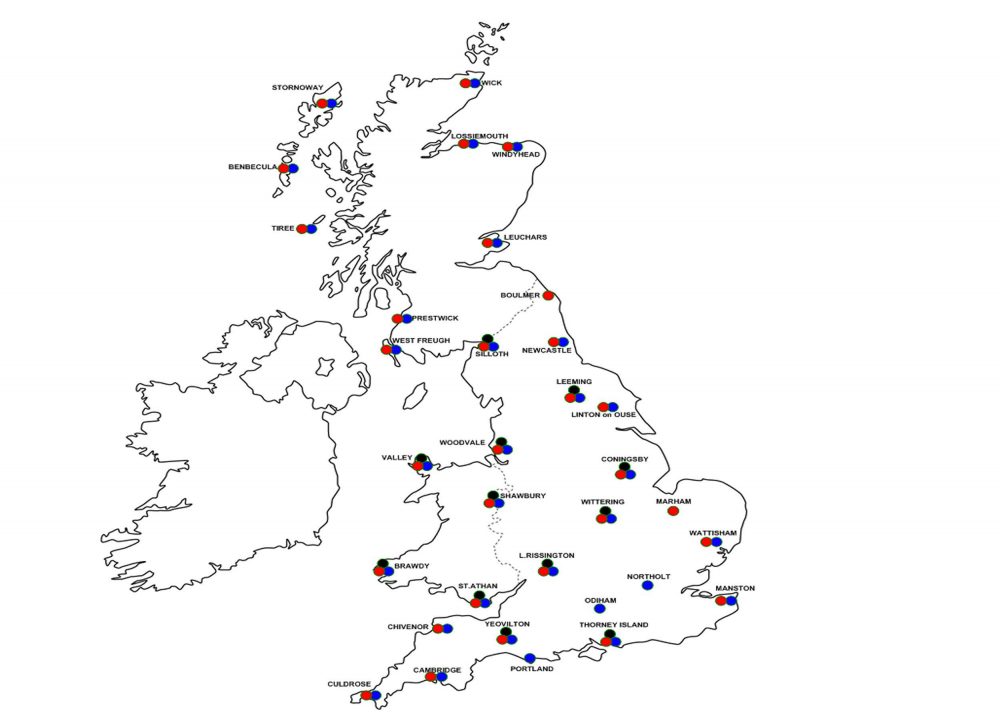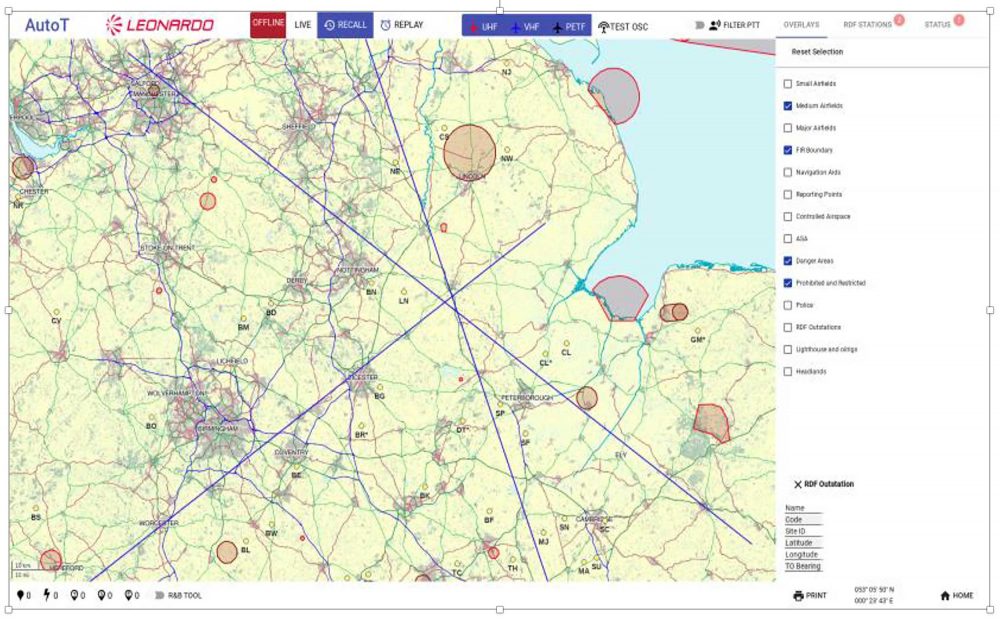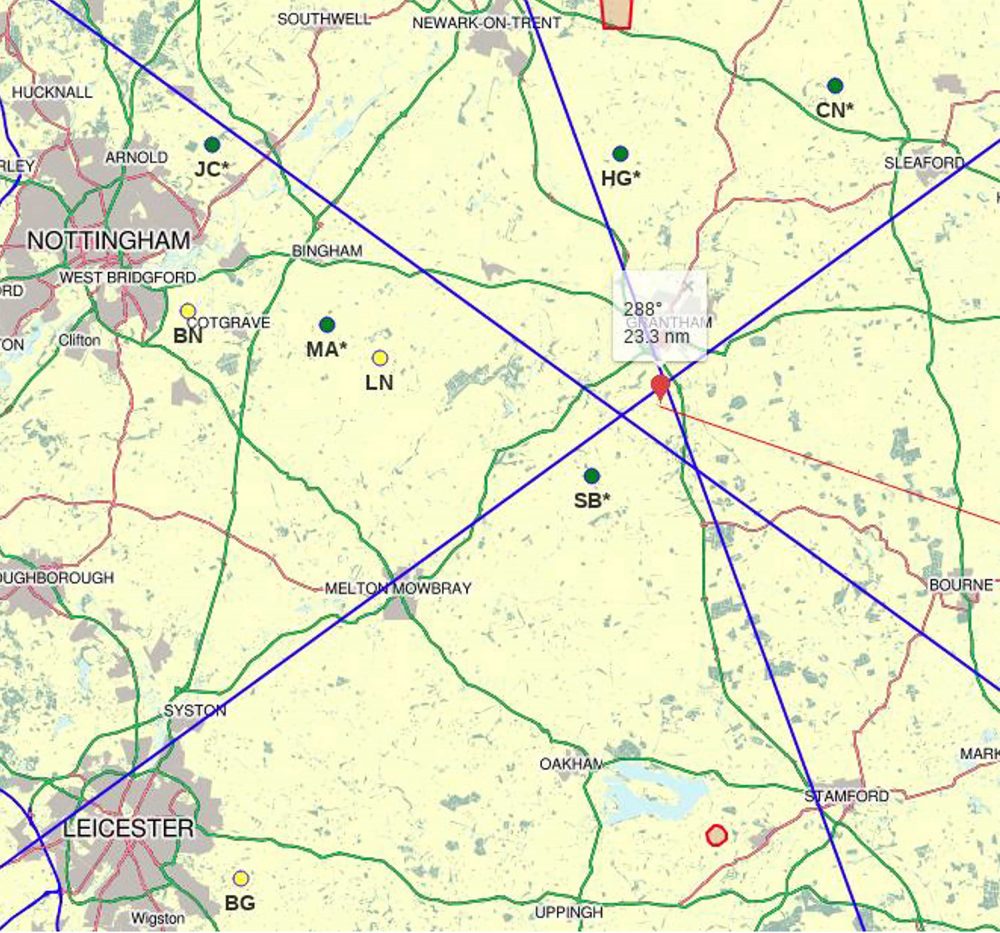Upon ranging in, the map becomes accurate in identifying local towns, villages, motorway junctions or even prominent hills.
D&D: ‘G-AN, your position indicates 1.5NM South of Grantham. Taking your own terrain clearance steer for Fenland is 110 degrees 23.5nm.’
G-AN: ‘Roger, 110 degrees, 23.5nm. G-AN’
D&D: ‘G-AN do you require any further assistance?’
G-AN: ‘Negative, G-AN’
D&D: ‘GPPAN roger, thanks for the call, continue on-route g’day!’*
*Straight from the CAP413.
With varying details, this is 90% of the Practice Pan calls we receive. Training Fixes are almost identical, but ‘Training Fix’ instead of ‘Practice Pan’ to simulate unsure of position or lost.
If there are only two lines of DF, we’ll caveat the accuracy with ‘based on two lines of DF which may be inaccurate.’ If none or only one line is observed, we’ll ask you to transmit a squawk and transpose your position from radar onto Auto-T.
If you’re squawking and we are still unable to observe you, we may ask you to climb (if it’s safe to do so), or request your last known position and call a nearby radar unit to see if you are visible on their radar and transpose your position based on their range and bearing information.
If all else fails we can see which leg you’re transmitting on, ask you for your last known position and get you to ‘say what you see’ out of the window… things on the ground, that is, not types of cloud. Make sure you stay vigilant of other aircraft – this is still your primary responsibility. This level of difficulty locating aircraft thankfully very rarely happens, but we’ll be doing all we can to locate you.
So there we have it. All trade secrets out in the open. Pre-Covid traffic levels, D&D would usually get on average 3,500 practices a year. We have had little over 3,500 in total over the last two years. Don’t be a stranger. After all… Practice Pans make perfect!









